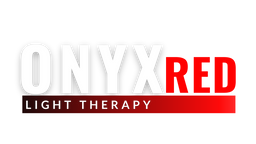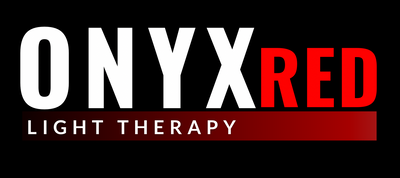July 10, 2023
St. Paul, MN, USA
According to the American Hair Loss Association, approximately 65% of men will experience some degree of hair loss by age 35. That number rises to 85% by age 50. Hair loss in women, while receiving less attention, is very prevalent, with women making up fully 40% of all hair loss sufferers.
Causes of Hair Loss
Hair loss can affect anyone at any time for many different reasons. According to Harvard Health Publishing [1], the primary causes of hair loss include:
High stress and anxiety levels.
Hormonal changes during pregnancy, post-partum, and menopause.
Severe and prolonged hypothyroidism or hyperthyroidism.
Medications and supplements, such as those used for cancer, depression, arthritis, heart problems, high blood pressure, and gout.
Scalp infections and fungal issues.
Family history with androgenetic alopecia, which is a genetic form of hair loss.
Common Treatments for Hair Loss
Minoxidil (Rogaine)
While the exact mechanisms are unclear, minoxidil is believed to help with hair growth by vasodilation (widening of blood vessels), allowing more oxygen to reach the hair follicles. It also appears to increase the size of hair follicles, reversing the effects of follicular miniaturization.
Finasteride (Propecia)
An oral treatment, finasteride works by preventing testosterone from being converted to dihydrotestosterone (DHT is the androgen responsible for follicular miniaturization). While minoxidil is used exclusively to regrow hair, finasteride can also prevent hair loss.
Corticosteroids
Corticosteroid injections work by reducing inflammation around the hair follicle and suppressing the immune system. Topical steroid creams can also be used to reduce inflammation and encourage hair growth.
Hair transplant
This treatment involves removing individual hairs or a strip of hair from one section of the scalp and transplanting it onto another section. While the effects are permanent, this is the most invasive and expensive of all the treatments. It can cost anywhere from $8,000 to $25,000. Hair transplants can be painful, and carry some risk, including infection, scarring, and nerve damage.
How Can Onyx Red & NIR Light Therapy Help With Hair Loss?
Superior quality red light therapy devices deliver safe, concentrated wavelengths of natural light without ultraviolet rays, excess heat, or chemicals. The red and NIR wavelengths stimulate the mitochondria to reduce oxidative stress and improve circulation, allowing the body to generate more core energy to power itself. [2]
Improved physical functions athletic performance, enhanced healing processes, and lower inflammation and pain are the effects, as demonstrated in a 2017 study. [3] Exposure to light-emitting diode (LED) irradiation and low-level laser therapy also stimulates the dermal papilla cells, which play a significant role in the regulation of hair cycling and growth. [4]
Zero Side Effects and More Efficacious than Pharmaceutical Drugs
A meta-analysis from 2018 reviewed 22 studies comparing red light therapy to pharmaceutical treatments including Finasteride and Dutasteride (hormone-regulating drugs) for balding. The results showed that red light therapy for hair growth was the superior treatment. Furthermore, many of the drugs examined in this meta-analysis had negative side effects, while red light therapy had none. [5]
Improved Hair Density, Thickness, Strength, and Count
A 2017 meta-analysis reviewed 11 studies and 680 participants who received red light therapy for thinning hair. The analysts noted impressive improvements in hair density, thickness, strength, and overall count in several patients treated with red light. The researchers concluded that red light therapy is a promising monotherapy for androgenetic alopecia and may serve as a viable alternative to pharmaceutical medications and surgical options for hair regrowth. [6]
Red Light Therapy for Male Pattern Baldness
In 2019, researchers examined men with pattern hair loss and changes to the protein expression in their dermal papilla cells. Each participant received 25 minutes of red light therapy treatment every other day for six months. By critically assessing the proteins that exhibited upregulation, the researchers concluded that red light therapy stimulated hair growth and reversed the balding process by enhancing the function of dermal papilla tissues. [7]
Red Light Therapy for Female Pattern Baldness
With female pattern baldness receiving much more attention in recent years, many treatments have emerged, with red light therapy being a top hair loss treatment for women today.
To determine the effectiveness of red light therapy on women with hair loss, researchers conducted a double-blind, randomized trial including 47 women had a portion of their hair trimmed down to 3mm before tattooing and photographing the area. One group received red light therapy every other day for 16 weeks, while the other group received a sham placebo treatment. Upon completion of the study, the researchers found a 37% increase in hair growth in the red light therapy group with zero adverse side effects. [8]
Conclusion: Is Red Light Therapy Safe and Effective for Hair Growth?
We believe red light therapy is a very powerful hair loss intervention for both male and female pattern baldness. The clinical trials cited in this article confirm this. If you are struggling with hair loss, consider trying red light therapy and enjoy its other clinically-studied benefits as well (joint pain relief, skin rejuvenation, wound healing, sleep quality, workout recovery, improved vision, and others)
Onyx Light Therapy is a provider of the highest quality red and near infrared light therapy devices on the planet. Shop now: https://onyxlighttherapy.com/
“Low-level light therapies, including red light and near infrared light, have been shown to be effective for a huge number of biological phenomenon and medical treatments.”
-Andrew Huberman. Professor of Neurobiology & Opthalmology at Stanford School of Medicine. Host of the Huberman Lab podcast.
Quote from Huberman Lab podcast #68: Using Light (Sunlight, Blue Light & Red Light) to Optimize Health
https://www.youtube.com/watch?v=UF0nqolsNZcb
References:
[2] https://pubmed.ncbi.nlm.nih.gov/29869529/
[4] https://www.mdpi.com/2227-9059/10/4/924/htm
[5] https://pubmed.ncbi.nlm.nih.gov/29797431/
[6] https://pubmed.ncbi.nlm.nih.gov/27114071/
[7] https://pubmed.ncbi.nlm.nih.gov/30843235/
[8] https://www.ncbi.nlm.nih.gov/pmc/articles/PMC4265291/
“Low-level light therapies, including red light and near infrared light, have been shown to be effective for a huge number of biological phenomenon and medical treatments.”
-Andrew Huberman. Professor of Neurobiology & Opthalmology at Stanford School of Medicine. Host of the Huberman Lab podcast.
Quote from Huberman Lab podcast #68: Using Light (Sunlight, Blue Light & Red Light) to Optimize Health
https://www.youtube.com/watch?v=UF0nqolsNZcb


